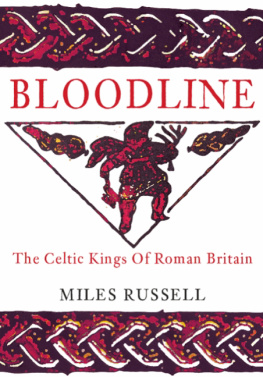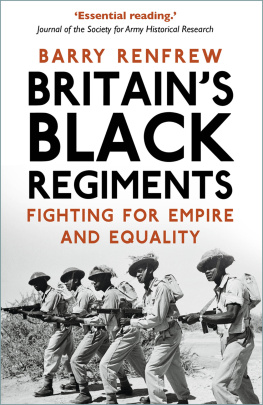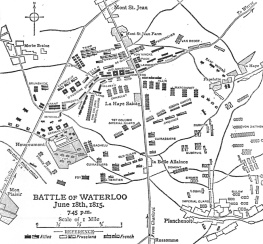The right of Iain Gordon to be identified as Author of this work has been asserted by him in accordance with the Copyright, Designs and Patents Act 1988.
All rights reserved. No part of this book may be reproduced or transmitted in any form or by any means, electronic or mechanical including photocopying, recording or by any information storage and retrieval system, without permission from the Publisher in writing.
ACKNOWLEDGEMENTS

The Author is deeply grateful to the following for their assistance in the preparation of this book:
Colonel S. C. H. Ashworth, RHQ The Mercian Regiment.
Major M. L. Badham-Thornhill, Royal Artillery.
John Baker, Curator Airborne Assault, Museum of The Parachute Regiment.
Colonel M. J. Ball, RHQ The Princess of Waless Royal Regiment.
Lieutenant-Colonel R. J. Binks, HHQ The Royal Scots Dragoon Guards.
David Blake, Museum of Army Chaplaincy.
Carolyn Bleach, HQ Intelligence Corps.
Colonel T. C. S. Bonas, RHQ Welsh Guards.
Lieutenant-Colonel W. R. Brace MBE, HHQ 1st The Queens Dragoon Guards.
C. A. Campbell, Regimental Secretary, Royal Regiment of Scotland.
Major D. N. Chappell, HHQ 9th/12th Royal Lancers.
Lieutenant-Colonel C. P. Conlon, RHQ Royal Corps of Signals.
Captain J. C. Cornish, HHQ The Kings Royal Hussars.
Corps Archivist, The Corps of Royal Electrical and Mechanical Engineers.
Corps Secretary, HQ Army Physical Training Corps.
Major E. M. Crofton, RHQ Coldstream Guards.
G. Edgerley-Harris, The Gurkha Museum.
Major J. M. Evans, HQ Queen Alexandras Royal Army Nursing Corps.
Major M. Everett, Curator, Royal Welsh Museum.
Major R. C. Gould, RHQ The Royal Anglian Regiment.
Colin Gray, RHQ The Royal Irish Regiment.
Captain W. A. Henshall, HHQ The Royal Dragoon Guards.
Lieutenant-Colonel C. N. Holman MBA, HQ Corps of Royal Engineers.
Captain J. M. Holtby, HHQ The Queens Royal Lancers.
Lieutenant-Colonel C. J. Ions, HQ Army Air Corps.
J. E. Lloyd, Household Cavalry Regiment Museum and Archive.
Captain G. E. Locker, HHQ The Light Dragoons.
Lieutenant-Colonel D. J. Owen, HQ The Royal Logistic Corps.
RHQ Scots Guards.
RHQ The Yorkshire Regiment.
Regimental Secretary, The Queens Royal Hussars (Queens Own and Royal Irish).
Regimental Secretary, City of London HQ, Royal Regiment of Fusiliers.
Regimental Secretary, Royal Tank Regiment.
Captain J. J. J. L. Roberts, RHQ Irish Guards.
Lieutenant-Colonel C. J. E. Seymour LVO, RHQ Grenadier Guards.
Major J. Sharp, HQ Royal Army Dental Corps.
Major W. J. Spiers, RHQ The Rifles.
Captain P. Starling, Army Medical Services Museum.
Colonel K. M. Tutt OBE, HQ Adjutant Generals Corps.
and the Directors and Staff of The Templar Study Centre, National Army Museum, Chelsea.
RESEARCHERS
Readers who are researching the service careers of relatives or others are advised, in the first instance, to contact the relevant Regimental Museum, as shown in the following pages, who will advise them on their best course of action. A small charge is usually made where specific research into an individual or event is requested.
Enquiries should not be directed to Regimental or Home Headquarters who do not hold archive material and cannot assist in such matters.
AUTHORS NOTE
A volume of this size can only scratch the surface of a subject so vast as theformations of the British Army. It therefore confines itself to the Regular Army and makes no attempt to include the legions of Yeomanry, Volunteers and Militia, and the splendid formations of the modern Territorial Army, part-time soldiers who spring to the support of their Regular colleagues in troubled times and without whom Britain would, today, be wholly unable to fulfil her worldwide commitments.
It also confines itself to the more significant changes in each Regiments development and does not attempt to record every one of the frequent changes in regimental titles due simply to a change in colonels in the days when regiments were known by the names of their colonels.
Readers who are interested in pursuing this fascinating subject in greater detail must turn to the eight volumes of Anthony Bakers definitive work: The Genealogy of the Regiments of the British Army which includes the Territorial Army formations and the hundreds of ephemeral regiments raised in times of crisis, often for local defence, and disbanded and forgotten as soon as the crisis had passed. But they should be aware that in formations as long-established and with histories as proudly-preserved as the Regiments of the British Army, some disagreement on dates and titles is inevitable and no two books on the subject are exactly the same. I have tried, by comparison with several published sources and consultation with each individual Regiment and Corps, to get it as right as possible but I realise there are those who will dispute some detail and I apologise if I have outraged anyones strongly-held opinion.
IAIN GORDON
Barnstaple, Devon
September 2009
The Origins and Principal Reforms of the British Regular Army
T he formation and development of a standing army in Britain was driven by the two separate, yet conjoined, forces which have shaped our constitution the struggle for power between monarchy and parliament and the inter-denominational Christian conflict which resulted from the determination of King Henry VIII to change his wife.
It was also from these two forces that the traditional British mistrust and hostilityfor any form of regular army evolved. Whilst the need for a powerful navy, to keep us free from invasion and to spearhead and protect our commercial interests overseas has, until fairly recently, been accepted by politicians and populace alike, the existence of a standing army in peacetime has always been viewed with suspicion and unease. Similarly, while the Navy has enjoyed generous financial support from government and popularity with the people, (apart from in coastal communities when impressment was rife), the brutal and licentious soldiery has seldom won the affection of the public nor the approbation and financial indulgence of parliament.














